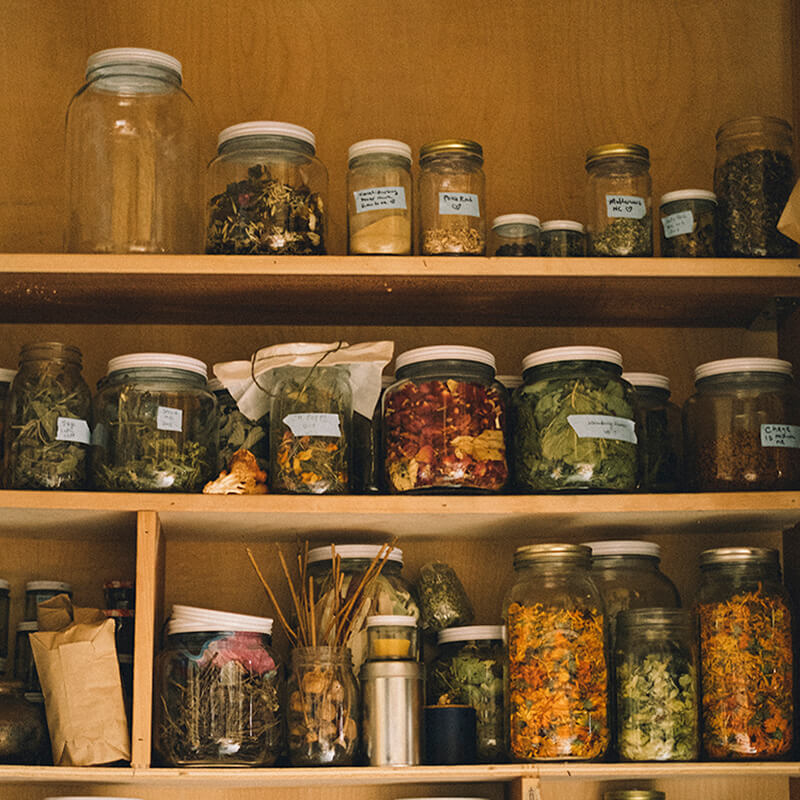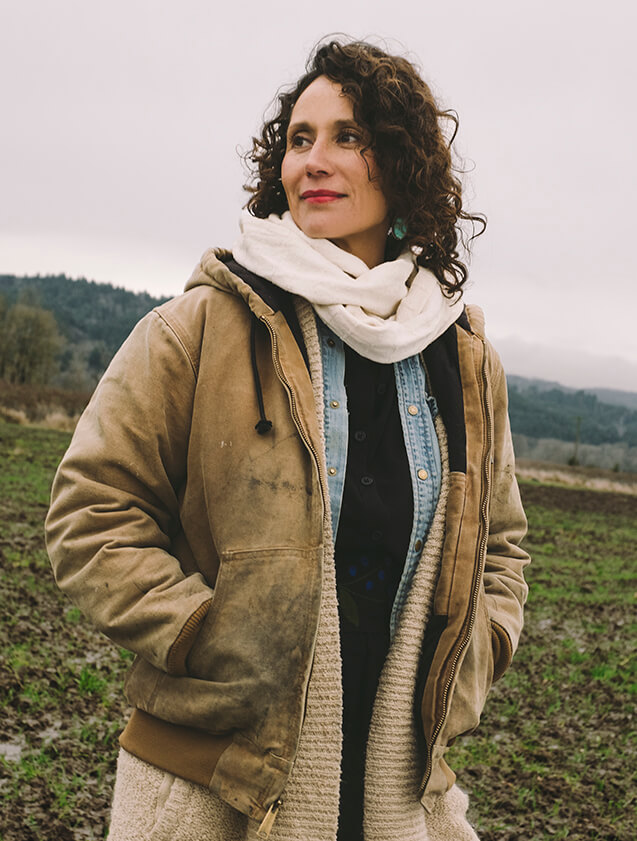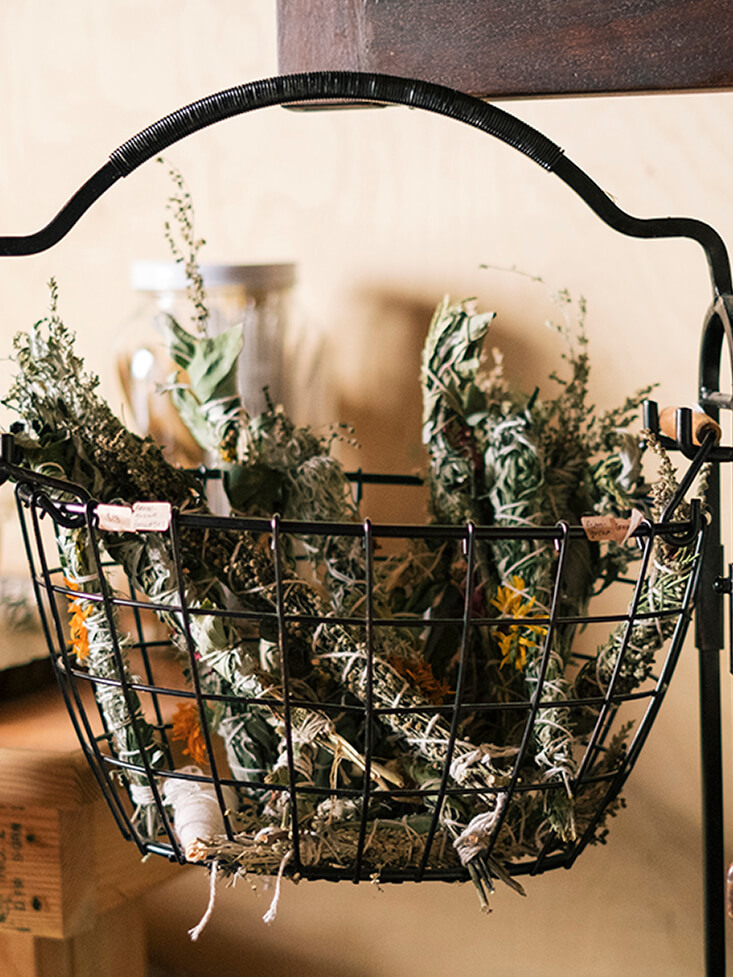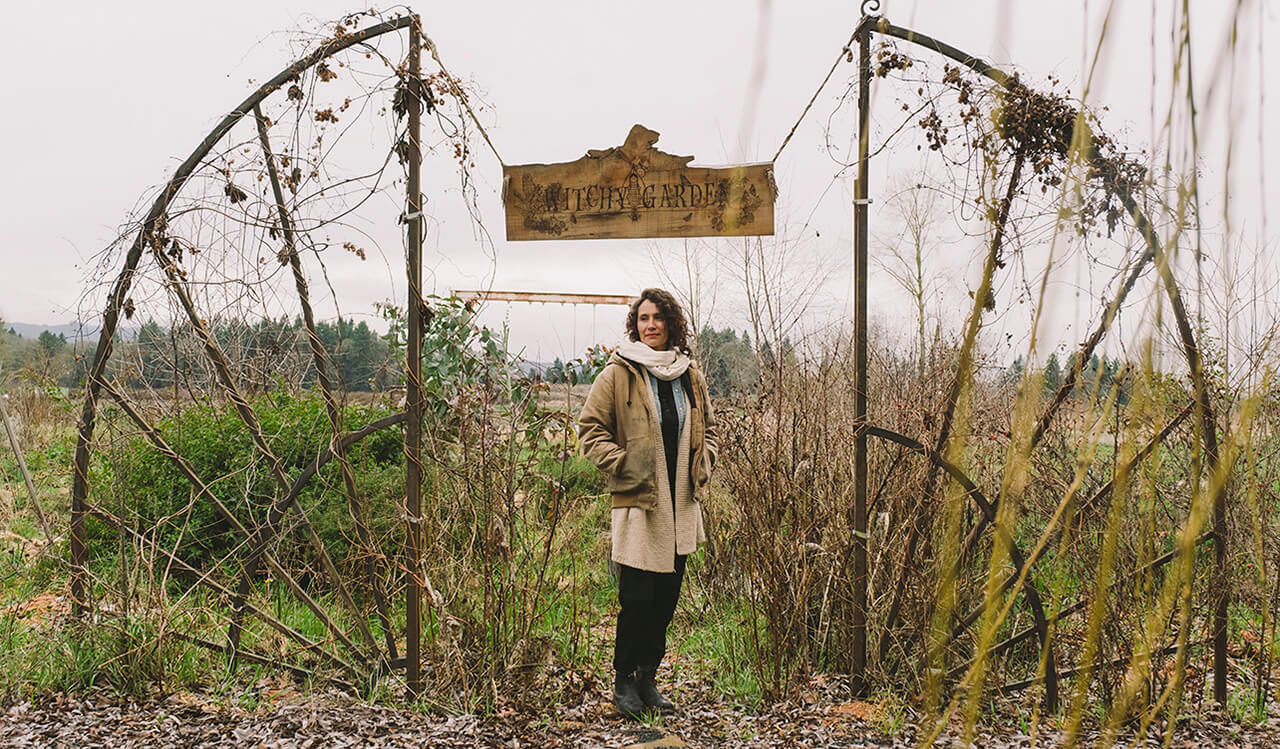Cultivating Strength From Tradition
Written by Malcolm Hoover Photos by Kari Rowe
The tradition of partnering with the land and the practice of venerating our grandmothers is common in many communities of color. My grandmother, Lena Mae DeBow from Obion County, Tennessee, was my first teacher.


She grew up on her father’s farm where they had cows, pigs, horses, chickens, ducks and a catfish pond. In the fields, they grew vegetables and staple crops. My great-grandfather Ben Bass, who I knew as Poppa, held more than 80 acres that he farmed for most of his life.
Jennifer Marie Rose Serna is a Latina folk herbalist who works the land of Wapato Island Farm on the southern side of Sauvie Island. Wapato Island Farm is named in remembrance of the Multnomah band of the Chinook tribe, who cultivated a distinctly beautiful tuber called wapato, or duck potato, for food and spiritual sustenance. It was a staple food of many natives across the Americas. The Multnomah people cultivated it in ponds on Wapato Island, later named Sauvié Island after a French dairy farmer who contracted to provide butter and dairy goods for local traders.
Serna came to the island as a young woman 14 years ago. She was enchanted by plants, herbs, and the medicines made by her granny, Mary Encicio Barrios nee Bombry. Mary, a Mexican yerbatera and Serna’s foundational teacher and elder, taught her to listen to the land, to partner with the plants, and to make medicine for healing.


Serna is training to be a curandera, a traditional healing modality practiced in many Latin American traditions. “I have two curandera that I work with currently, and they both live close to the earth,” she says. “[They] teach me about ancestral connection.. becoming human again, and peeling away the amnesia this lack of culture holds. I’ve also been guided on how to learn from other intact cultures, with honor and respect, and to always make beauty for the unseen.” The tradition of curanderismo is not taught to all who seek to learn it. It requires commitment and integrity, two qualities that can be seen, felt, and tasted in her products and on her farm. Serna cultivates almost 100 percent of what she uses in her products and generously shares her space with other farmers. Collectively the 32-acre farm produces mushrooms, hemp, and medicinal plants.
The motivation for people like Serna and myself to sustain BIPoC food systems isn’t to create monetary wealth. Arthur Shavers and Shantae Johnson, the proprietors of Mudbone Grown, LLC, introduced me and countless others to the power of growing our own food. Mudbone is a Corbett-based farm with operations in several locations in Portland. Art and Shantae have established themselves as leaders in the BIPoC Regenerative Agriculture movement.
Art says, “Our grandmothers are our creative muses. So much of what we do and what we know we learned from them. It’s in our bones. Sometimes you do something out in the field, and you don’t even know why you do it, and it works! All of this stuff [our elders] do

has been relabeled as regenerative ag, soil-building, composting, etc. This is just stuff we have been doing forever; it’s what we learned to do culturally.”
I work on the land now as a community farmer in honor of my Poppa’s memory and as a service to my community. We work with the earth in these ways, growing food and medicine because we feel so deeply that this is a better way to live. It is better for us to grow food for ourselves and others that we know is healthy. This is how our ancestors have farmed for thousands of years, living on and with the land. The goal is to be healthy and whole and to share that with our community, our wholeness is our wealth.
“I’m a curandera in training. My great granny passed down healing and medicine making to me. She was my foundational teacher. I have 2 curandera that I work with currently, and they both live close to the Earth and see the unseen.”
– Jennifer Rose Marie Serna
Our Favorite Wapato Island Farm Products
Lightning cider aka fire cider
A 2-part vinegar we make with Sauvie Island Native berries and apples herbs, peppers, and produce all that we grow, along with 4 mushrooms that we cultivate! Other than the oranges and lemons, we grow it all!
How to use:
We recommend 1-2 tablespoons at the first sign of a cold or when you need to jumpstart your immune system!
Verde “green” salve for pain
A 4-part oil infusion collected from each season winter-cottonwood buds/ Spring-Western Red Cedar/ Summer-St John’s Wort Flowers/ Autumn- Hemp flower and leaf. This infuses for a full 12-moon cycle.
How to use:
Rub thoroughly on unbroken skin to provide immediate relief to bumps and bruises.
Agua de Florida
Homemade alcohol base soaked in a copal for 3 moon cycles. Then, traditional and Native plants from the garden are added to make a place-based blend. Finally, a hydrosol with flowers and mushrooms is added to the blend where it sits for another 3-moon cycle, on the altar.
How to use:
Dab this aromatic on your chakra points to instantly cleanse and provide protection.
Related Articles
Related
Hey Doc
“Hey Doc Clinic specifically is looking to center the queer, trans, and BIPOC communities. Basically what we’re saying is that this is a safe space.” Montserrat Andreys | Founder Hey Doc Storytellers Story Credit: Red...
Yancy Handmade
“I want to sell you a piece of art, and for you to know who is behind this product, who is the artist, to show you the significance of it, for you to love the product and understand the culture behind it.” “Yo quiero venderte arte, y que usted sepa que es lo que hay...
Blind Insect Gallery
“You have five seconds to rent a space in another person’s brain,” Pepe Moscoso Pepe Moscoso | Founder Blind InsectHOW TO SELL MAGIC TO THE WORLD “You have five seconds to rent a space in another person’s brain,” Pepe...
